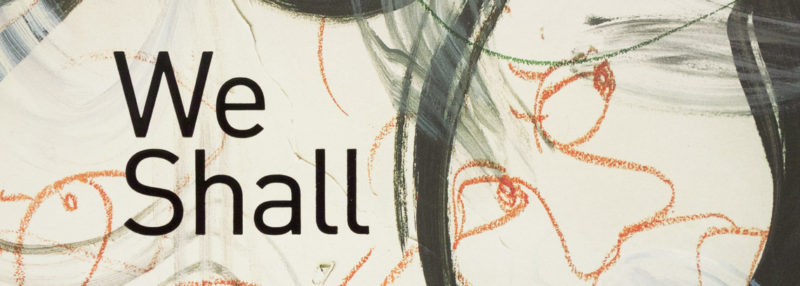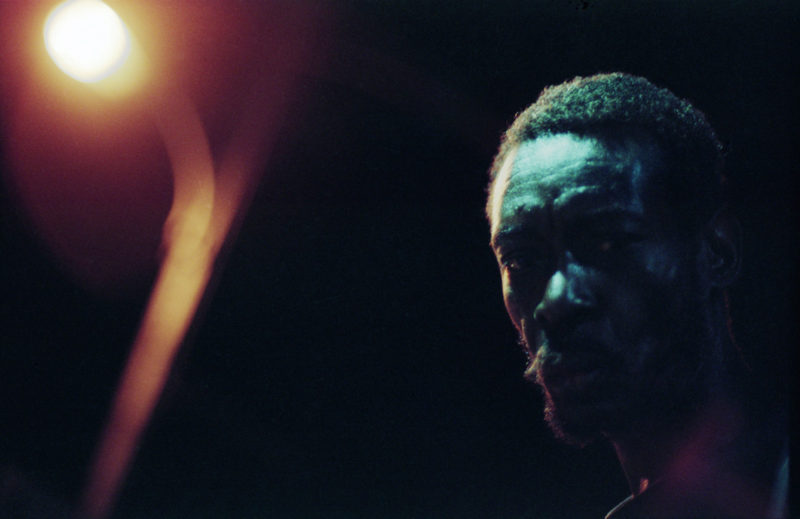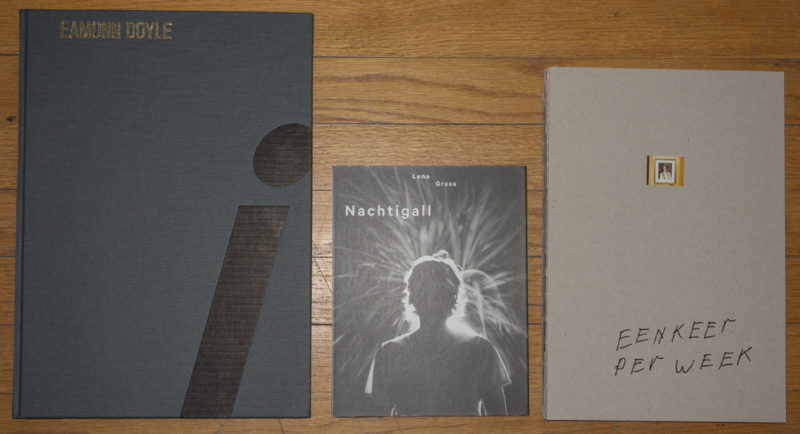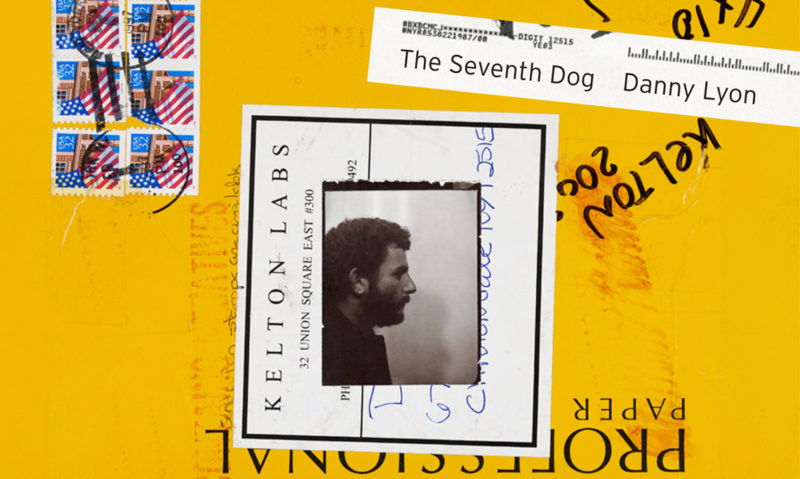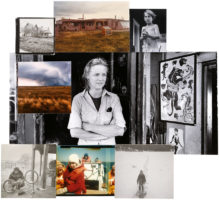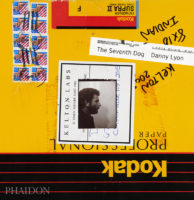Photography lends itself to being used to catalog things (or people). Using photographic catalogs of people’s possessions to try to say something about their owners has a solid tradition, including (but of course not limited to) examples such as Hans-Peter Feldmann‘s Alle Kleider einer Frau, Christian Boltanski‘s Inventaire des Objets Ayant Appartenu a une Femme de Bois-Colombes, or, more recently, Miyako Ishiuchi‘s Hiroshima, Nele Glück‘s Auf Ewig. In a nutshell, the photographs in any of these bodies of work are used to stand for what they depict. The sum of what they depict, in turn, is then used to stand for those who own(ed) the objects.
Photographically, such an approach provides a simple strategy. But I want to think it only gets interesting if you realize that first, a photograph is not the same as what it depicts. Furthermore, a photograph is not only not what it depicts, it also transforms what it depicts into something else. And even if you ignore all that, to what extent do the sum of a person’s possessions really reflect back to that person, describe that person, speak of her or his desires or dreams?
If I think about the various things in my apartment, they contain the things that I bought because I really wanted to own them, the things that I bought because I thought I would enjoy them (and I did), the things that I bought because I thought I would enjoy them (and I did not), the things that I bought because I thought I would use or need them (and I did), the things that I bought because I thought I would use or need them (and I did not), the things that I bought on impulse, the things that I bought that I know I should have thrown out already but haven’t, the things that I bought and use on a daily basis but that have no particular relevance to me (my toothbrush), the things that I bought and use on a daily basis and like even though in the grand scheme of things they have no particular relevance to me (Dr Bronner’s soap), the things that I bought and don’t use on a regular basis even though if I used them on a regular basis I might benefit from them (multivitamin supplements), the things that I bought even though if pressed I would pretend I have no idea how they came into my possession (those are none of your business obviously), the things that were given to me by someone else that I kept because I like them, the things that were given to me by someone else that I kept because I can use them for my job (even though I don’t necessarily like them), the things that were given to me by someone else that I kept because I feel bad about throwing them out even though I really don’t like them, the things that I found that intrigued me, the things that were given to me at some stage that still have utility, the things that were given to me at some stage that might or might not still have utility, the things that were given to me that don’t have any utility any longer even though I think they still do and that I’m thus refusing to throw out, the things that were given to me that don’t have any utility any longer and that I’m simply too lazy – or forgetful – to throw out, etc.
I briefly considered extending this list for another ten thousand words or so, describing all the things in my apartment, but I then realized that would be a bit besides the point here. The point being that if you looked at any of the things here, you wouldn’t know anything about them other than that they are present. You wouldn’t know why they are present. Whatever intent might have existed (or still exists) behind my decision not to throw them out would be inaccessible to you (in much the same fashion, the intent behind the making of a photograph, any photograph, is inaccessible for its viewers).
In all likelihood, I would object to you thinking of me as the person defined by my possessions, because as I started to elaborate above, you wouldn’t know the reasons for their existence.
What is more, I would also like to think that I am in part defined by the things that I would really like to possess but unfortunately don’t have the funds to acquire (a copy of Michael Schmidt’s Waffenruhe, say), or the things that I would like to possess (for whatever reason) that I simply haven’t bought yet (for whatever reason – a copy of William Eggleston’s Guide, say), etc. In addition, I would like to think that I can only be in part defined by the things that I own (or don’t own), given that what I believe in or not believe defines me as well, even though it might not be tied to any object in particular, etc.
I think you’re getting my point (well, I hope anyway).
Consequently, the game of photographing a set of possessions only becomes interesting provided you realize that while it’s a simple strategy, it’s also ultimately a useless one: by construction, you are going to be unable to achieve what you (pretend to) set out to achieve. To a varying extent, the artists mentioned earlier are not only aware of this conundrum, but make use of it.
Andrea Ferrari‘s The pictures included in this envelope, a recent addition to the growing list of books of photographic lists, deftly refuses to play along any of the rules laid out by its predecessors. To be more precise, it plays by the rules alright, presenting a set of photographs that as objectively as possible depict an object (or a group of objects) from a person’s possession. This person is identified as Giulia C., “an unknown Milanese chemist,” in the publisher’s description of the book. We have no way of knowing whether this is indeed correct, in other words if this person ever existed, or if this is all made up (frankly, that doesn’t even matter).
What we do know – or get to know – is the utter uselessness of the photographs in the book, because even though they do exactly what they’re supposed to do, they refuse to reveal much, if anything. Giulia C. remains an enigma. In part, this effect is achieved by the fact that many of the objects don’t reveal much per se. If you don’t believe anything I wrote above, if you do think that photographs of objects can tell us something about their owners, then good luck to you with this book! Needless to say, if you’re as wary of photography’s claims as I am, good luck to you as well, trying to figure out what’s going on here. And I mean this in the best possible way.
This book is an enigma that initially is irritatingly bland, with its pictures and pictures of things that are hard to make out. But it becomes more and more entertaining to experience the more the viewer is willing to let go of all those ingrained ideas about photography, and of the desire to understand.
Where no understanding is to be had, one just needs to make things up! And that’s where the real excitement begins.
The pictures included in this envelope; photographs by Andrea Ferrari; essays by Quentin Bajac and Laura Gasperini; 122 pages (plus 16 page booklet); Kehrer; 2013
Rating: Photography 3, Book Concept 5, Edit 3, Production 4 – Overall 3.8


